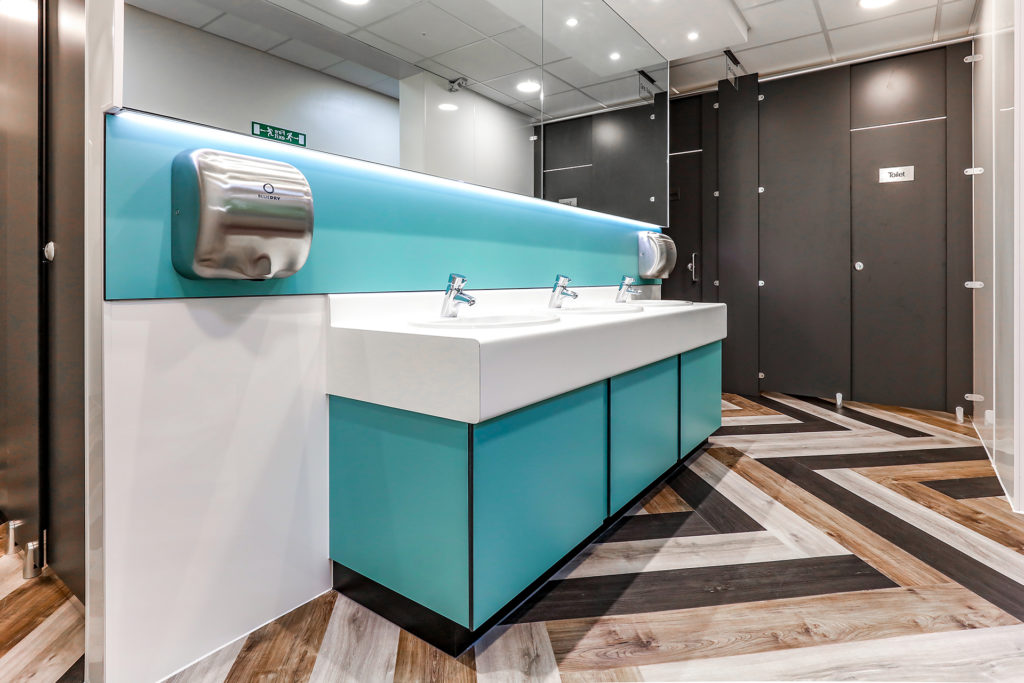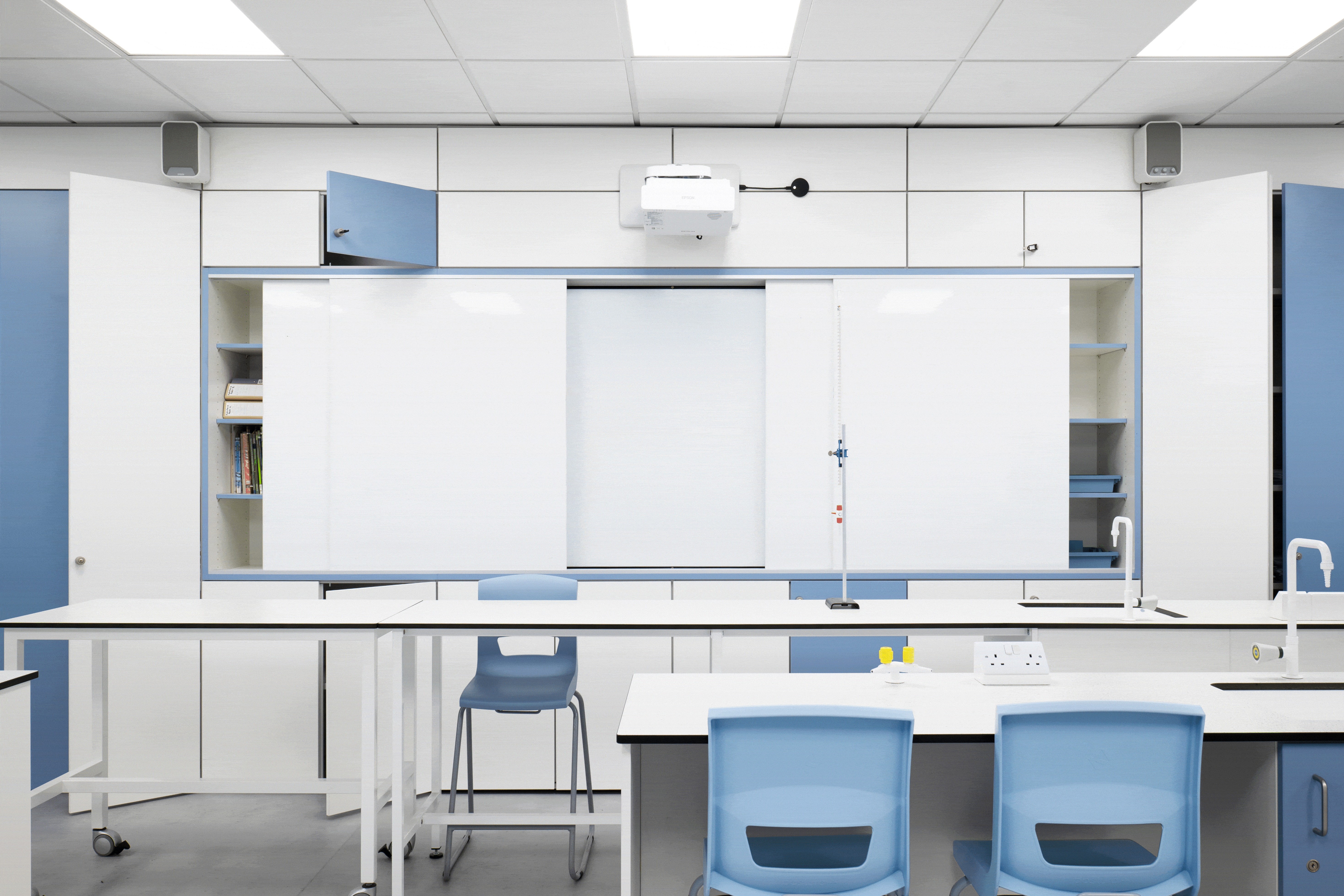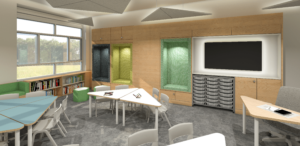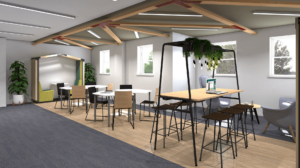Never has it been more important to consider the levels of hygiene in our schools. Whilst teachers and school leaders are doing everything they can to ensure the safety of the children in their care, implementing effective techniques for social distancing and ensuring regular and thorough hand-washing, it’s vital that the spaces in which these crucial procedures are taking place are carefully considered and appropriately suited to their purpose.
As with all crisis incidents, it’s important to extract positives from the situation, however gloomy the outlook may initially look. And one silver-lining we can focus on during this difficult time is the opportunity to drive innovation and invention in the education our children are receiving. For the next few months at least, there is a tangible shift in the workforce hierarchy, requiring careful cohesion and integration to ensure a smooth operation of the school. It’s everyone’s aim to strive for as much normality as possible, however difficult a task this may seem. And with this shift of responsibility, comes new expectations. School cleaners have been elevated in status to sit at the top of the pile in order of importance.
Everyone is firmly set on having safe and sanitary working environments for all members of the school staff to work in.So how do we make their jobs as easy as possible? Is there anything that can be done to maximise the efficiency of the cleaning process? How can we be sure that washrooms, in particular, are safe for our children and staff to occupy?A good starting point is to consider how your washroom is normally used. Each school setting will have a slightly different requirement for their facilities. Some will require them to double up as changing rooms, others will serve as storage facilities for cleaning products, children’s games kit, or even sports equipment. In each instance, it’s useful to review if this dual (or even tri) use is actually hygienic or could it be risking unnecessary contamination?
It’s also valuable to observe the movement of pupils during the use of these facilities, as this can identify high-stress areas and potential germ hotspots. Once primary use has been successfully established, the focus can be firmly shifted onto ensuring the highest levels of hygiene, and the design of the washroom area brought under the spotlight. These 5 simple suggestions should help to keep your school washroom facilities safe to use and easy to clean in a time when hygiene has never been more important.Deploy the use of curved edgesCracks, corners and crevices are germ hotspots. Not only are they difficult to effectively clean, residue builds up in the joins to stagnate and provide breeding grounds for germs and bugs. By using curved edges in place of corners and joins, potentially dangerous areas are eliminated.
No wall to floor joinIn a similar vein to the use of curved edges, eliminating the join between the floor and the wall is another way of improving the cleaning process and reducing the opportunity for germs to collect. Full height one-piece fibre-glass cubicles are easy to clean and keep school toilets hygienic and safe to use.Reduce items that require contactTouching spreads bacteria, be it from person-to-person or from one surface to another, and because of this, it’s pertinent to avoid contact with as many surfaces as possible. An easy way to drastically reduce the need to touch surfaces is the implementation of sensors on crucial elements of the washroom. Infrared toilet flushes, motion operated taps, automatic hand wash dispensers, even internal and external sensor-operated door locks can be deployed to almost entirely eliminate the need to touch any of the surfaces in the school bathroom.
Keep it open plan
Having an open-plan washroom area has many benefits. In terms of hygiene, it keeps fresh air circulating and allows the cleaners easy access to all elements that require cleaning. But there are secondary benefits too. Traditional washroom facilities can present hotspots for bullying and in the process of opening out the space, there are fewer opportunities for antisocial behaviour to discreetly occur.
Check out this open-plan washroom we created with Brentwood School.
Do away with doors
Not completely, for obvious reasons, but carefully designing the layout of the school washrooms can reduce the need for doors, apart from those on individual toilet cubicles. Not only does the lack of partitioning reduce the number of surfaces on which germs and bacteria can breed, but the benefits of open-plan design are also documented above. Strategically placed turns, walls and bathroom facilities, can all create natural barriers without the need for opening and closing doors.As we mentioned at the beginning of the article, challenging times present an opportunity for innovation and progression. Your school might be about to embark on a quieter than normal summer term, so now could be the perfect time to embark on a washroom renovation project. Why not use this time to revolutionise your toilet facilities, so that when your schools are busy and bustling again, you can confidently say that your school is leading the way in hygiene and cleanlines



